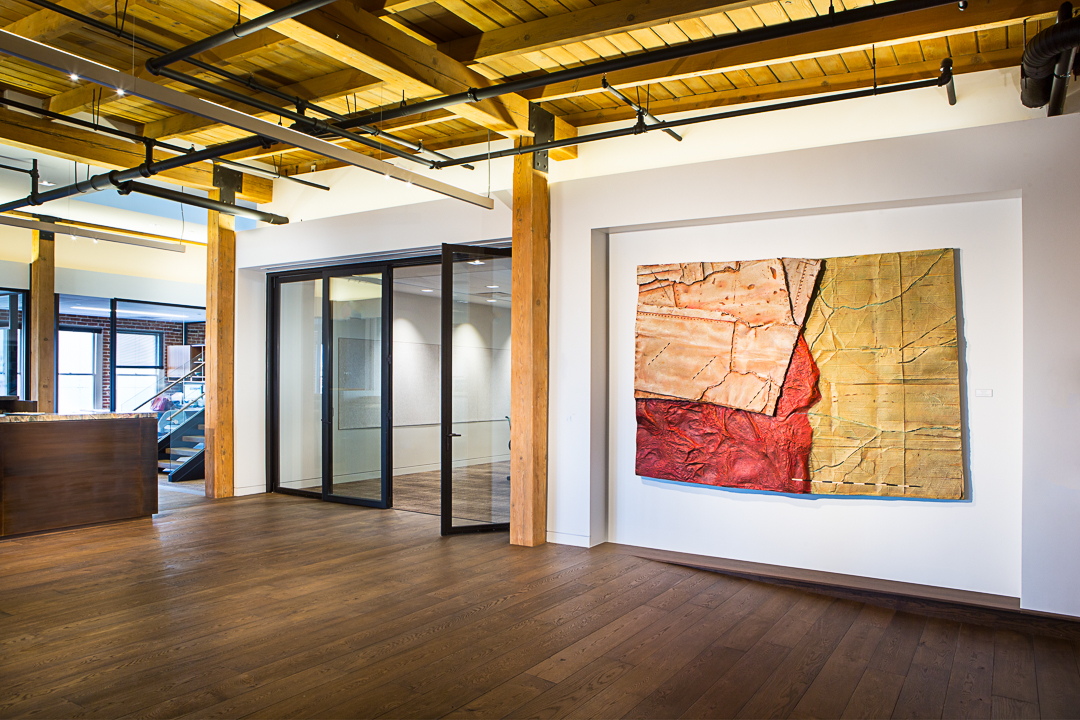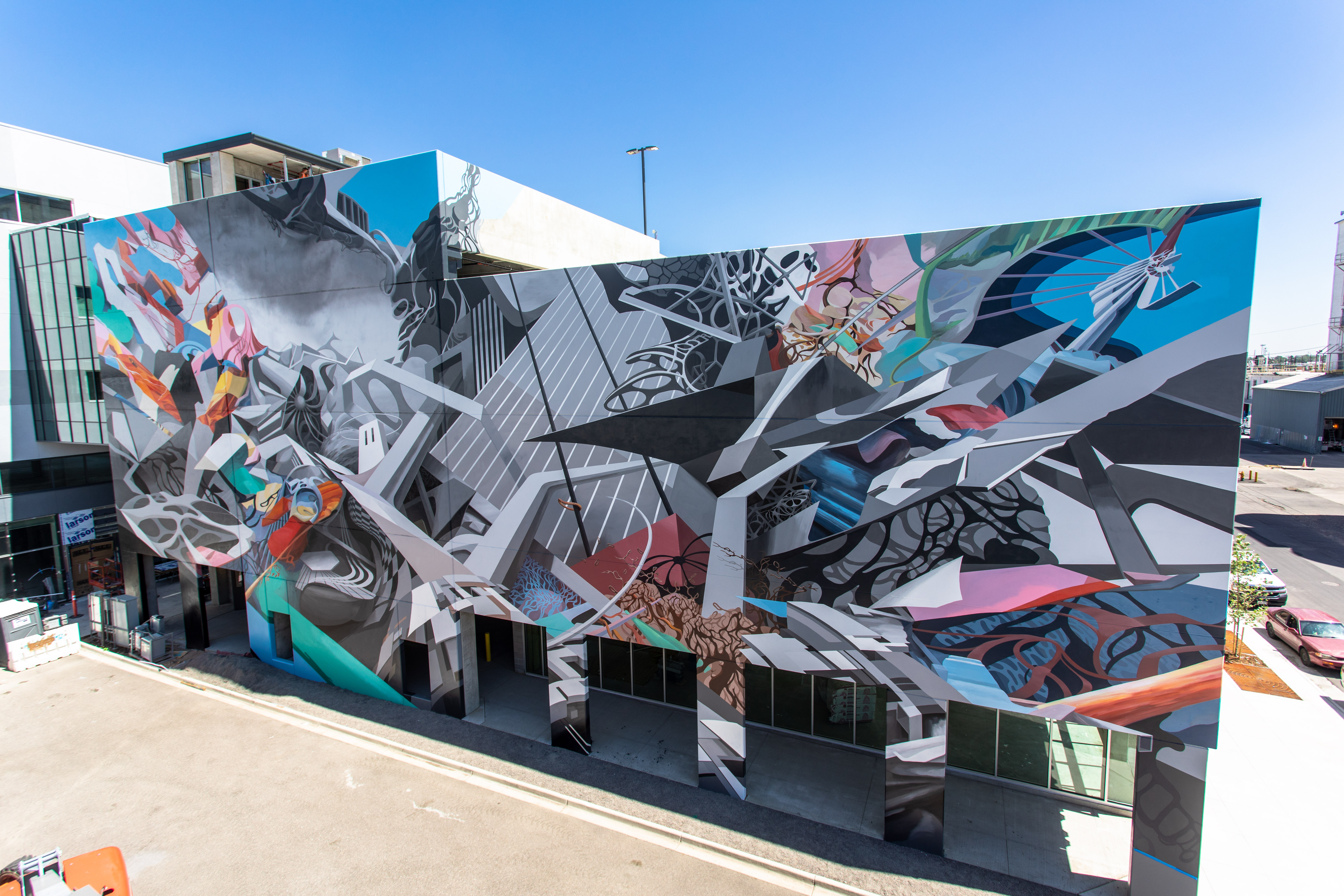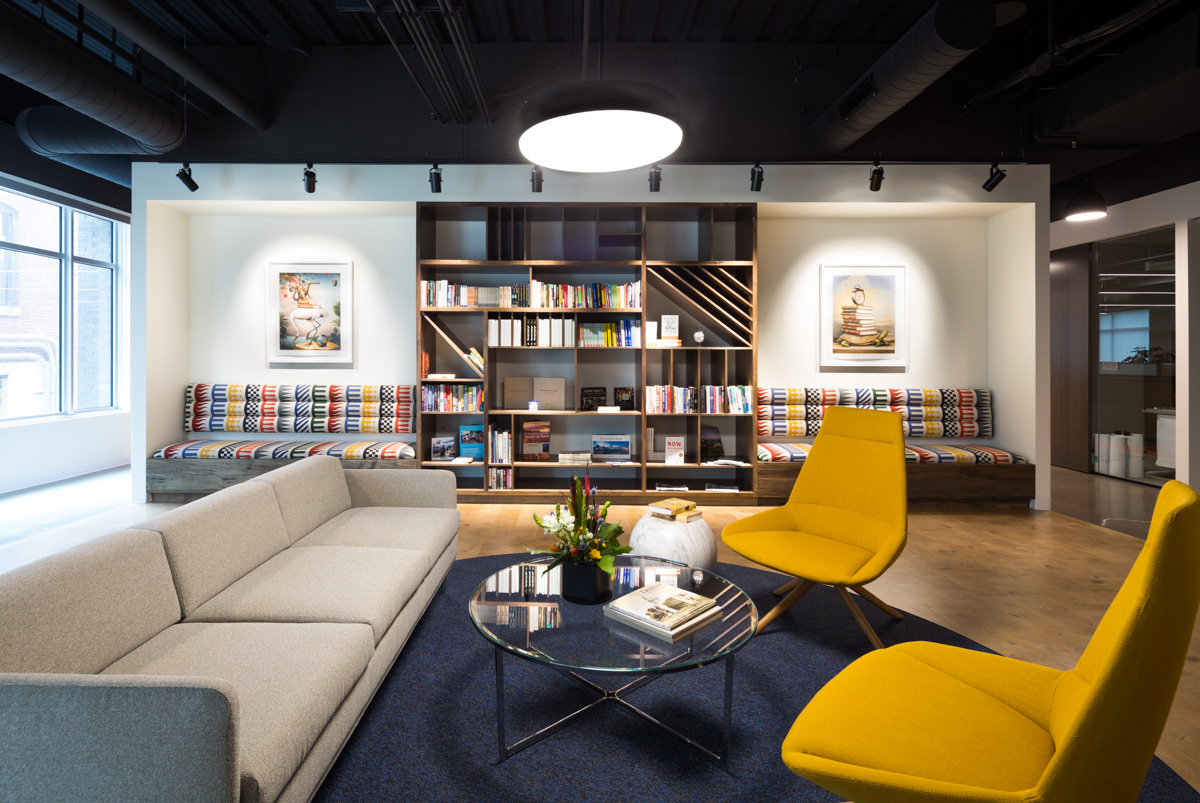As the world continues to reopen, many face the next stage — returning to public life. On one hand, this prospect conjures excitement for many. While, for some, there is concern and hesitation.
A recent study by Safety.com found that more than 70% of Americans are at least slightly apprehensive about embracing our traditional way of living, especially when it comes to returning to the workplace.
At a time when emotional well-being of employees is paramount, how can employers ease concern and appease this anxiety?
The answer: art.
According to Americans for the Arts, almost 70% of Americans believe art lifts them up beyond everyday experiences and over 80% state they consider art to be a “positive experience in a troubled world.”
Here are five ways art can lower stress levels and increase happiness.
Art creates belonging through a shared mission and vision
Incorporating artwork into a workplace or public area can create a sense of belonging in a world that previously felt isolated. In fact, a study by NINE dot ARTS found that 92% of people say art installations elicit positive work-satisfaction.
So, why not use this unique vehicle to create company culture visually? Utilize multiple types of art to remind your employees and customers of your brand’s mission and vision.
Take the Gates Family Foundation. Through 25 pieces spanning over 20,000 square feet, the organization focused on the story of Colorado’s history and natural assets. Their office renovation is a reminder to their employees of the brand’s mission to impact and enhance the quality of life in Colorado.

Art generates a sense of place and connection
Seven in 10 Americans say the arts not only improve the quality of life of their community, but also its image and identity. Dynamic art builds connection to a space and engages bystanders in the rich history of the area.
After all, public art is key to placemaking because it encompasses the areas we inhabit on a daily basis. The Dairy Block showcases an activated alley which cuts through the middle of the block. Pedestrians can explore ten works by different local artists in a variety of mediums. The artworks reflect Dairy Block’s past as a former dairy farm, while nodding to the future of the space and its neighborhood.

Art boosts productivity and collaboration
Work productivity increases by 17% when art is incorporated into a workplace according to The University of Exeter. After all, art fosters creativity, focuses on new perspectives and allows for unique and innovative ideas.
As we prepare to return to work, organizations should create social spaces that support interaction and feed collaboration, something often unachievable through remote work. Incorporate areas in your space to create a social lounge dedicated to brainstorming and employee bonding. Look for art, furniture and other items that will foster the idea of partnership amongst colleagues.
Ultimately, find ways to generate relationships and connection to your brand. When Denver Water looked to redesign their headquarters, they went directly to their employees to help craft a collection that would share the story of how Denver’s water flowed into the city’s faucets. Alongside a local artist, the employees integrated their ideas into a staple part of the organization’s public presence.
Art is a driver of economic growth and stability
Investing in art is good business. Research by the Urban Land Institute suggests that creative placemaking provides financial, social and environmental benefits. The arts industry is known to improve the health of the broader economy, even in times of downturn.
By supporting the arts, organizations not only create happier, more productive employees, but also reinforce their bottom line and boost the economy. Arts and culture lead to greater community buy-in and better market recognition. They boost quality of life and attract and delight visitors to the space.
Art creates an experience
Art allows a visitor to see a space in unexpected ways. It draws customers in and connects them to your facility. From a hotel lobby to a parking garage, art can amaze and surprise.
The Rev360 project in the RiNo Art District did exactly that. A massive 55-foot-tall, 120-foot-wide public mural placed on a parking garage and adjoining alley draws people in from the street. The sheer size of the exhibit makes people stop and look and invites them in.

At a time when many of us are venturing back into reality, these types of shareable moments remind us of what we missed in person. Art connects us to others, to our past and to a path forward as we navigate our new reality.


